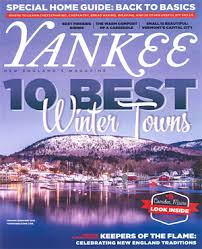Stop and Smell the Rugosas
I love stumbling upon an unexpected gem in a small community. The first time I entered the Clark Art Museum in Williamstown, Massachusetts, I was blown away by their collection of Impressionism, with impressive works by Monet, Manet, Degas, Renoir, Cezanne, and a room devoted to American master Winslow Homer. I felt this same way in early July when I entered St. Andrews, New Brunswick, a seaside village of 1800 people and entered the Kingsbrae Gardens. Wave after wave of color greeted me from the bed of perennials, planted like an artist’s palette. Hummingbirds flew under the tall chestnut trees, water lilies dotted the fountains, and everywhere you looked, there was some whimsical sculpture or children’s playhouse nestled within the 27-acre grounds. My favorite section was the Scent and Sensitivity Garden, where you can smell the tangy lemon-scented geranium or the tropical pineapple sage (that really does smell like a pineapple) or touch the velvety soft leaves of lamb’s ear. On the way out, I bent down and took a big whiff of the sweet-smelling rugosas. For a moment, everything was bliss.
(Photo by Lisa Leavitt)

 What a difference a year makes. Last winter I was driving around the entirety of New England researching a story on the best winter towns in the region for Yankee Magazine. The deluge of snow created a winter wonderland where I could truly appreciate everything New England has to offer during the cold weather months. This winter, I shoveled twice, saw very little snow, and it’s already March. I was fortunate to be writing about New England’s finest winter towns while they wearing a shiny white dress. That cover story for the Jan/Feb issue of Yankee Magazine is finally out on the web.
What a difference a year makes. Last winter I was driving around the entirety of New England researching a story on the best winter towns in the region for Yankee Magazine. The deluge of snow created a winter wonderland where I could truly appreciate everything New England has to offer during the cold weather months. This winter, I shoveled twice, saw very little snow, and it’s already March. I was fortunate to be writing about New England’s finest winter towns while they wearing a shiny white dress. That cover story for the Jan/Feb issue of Yankee Magazine is finally out on the web.  They say the best views of Puerto Rico are from the water. Watching the palms sway, seeing horseback riders gallop along the beach, and eyeing lighthouses as they stand tall, sending their beacon of light over the ocean waters. This is especially true if you’re on a board surfing Rincon. Called the “Caribbean Pipeline,” surfers from America, Europe, and South America flock to the western tip of Puerto Rico to glide atop the consistently large swell at spots like Maria’s, a monstrous reef break. The problem with Rincon was always the crime. Come back from a morning of surfing and your room is broken into. So it’s a joy to finally find a place that’s not only safe, clean, and serves delicious local food (included in the price), but is owned by a world-class Brazilian surfer. Roger Wagner’s six villas,
They say the best views of Puerto Rico are from the water. Watching the palms sway, seeing horseback riders gallop along the beach, and eyeing lighthouses as they stand tall, sending their beacon of light over the ocean waters. This is especially true if you’re on a board surfing Rincon. Called the “Caribbean Pipeline,” surfers from America, Europe, and South America flock to the western tip of Puerto Rico to glide atop the consistently large swell at spots like Maria’s, a monstrous reef break. The problem with Rincon was always the crime. Come back from a morning of surfing and your room is broken into. So it’s a joy to finally find a place that’s not only safe, clean, and serves delicious local food (included in the price), but is owned by a world-class Brazilian surfer. Roger Wagner’s six villas,  In 1990, I left my job as an insurance broker in Manhattan, booked an open-ended ticket to the South Pacific, New Zealand, and Australia, and wrote my first travel story, “Dining with the Descendants of Cannibals on a Fijian Island” for the Miami Herald. It would prove to be start of a career where I would write more than 1500 stories (over 300 articles for the Boston Globe alone) and visit over 90 countries. Then the recession hit. I lost more than half my editors in 2008-2009 as magazines folded and newspapers either eliminated or greatly reduced their travel sections. Wanting to utilize my travel expertise, I convinced Lisa to join me in a business venture and become an accredited travel agent.
In 1990, I left my job as an insurance broker in Manhattan, booked an open-ended ticket to the South Pacific, New Zealand, and Australia, and wrote my first travel story, “Dining with the Descendants of Cannibals on a Fijian Island” for the Miami Herald. It would prove to be start of a career where I would write more than 1500 stories (over 300 articles for the Boston Globe alone) and visit over 90 countries. Then the recession hit. I lost more than half my editors in 2008-2009 as magazines folded and newspapers either eliminated or greatly reduced their travel sections. Wanting to utilize my travel expertise, I convinced Lisa to join me in a business venture and become an accredited travel agent.